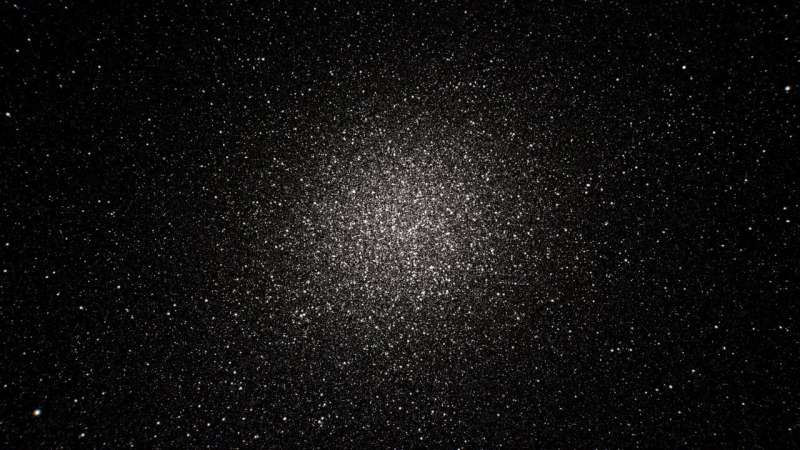This article has been reviewed according to Science X's editorial process and policies. Editors have highlighted the following attributes while ensuring the content's credibility:
fact-checked
peer-reviewed publication
proofread
New Gaia release: Cluster cores and unforeseen science

ESA's Gaia provides many new and improved insights into our galaxy and beyond with the release of five new data products. Among other findings, the mission reveals half a million new and faint stars in a massive cluster. The new Gaia stars revealed in Omega Centauri live in one of the most crowded regions in the sky.
Gaia's third data release contained data on over 1.8 billion stars, building a pretty complete view of the Milky Way and beyond. However, there remained gaps in our mapping. In areas of the sky that were especially densely packed with stars, Gaia's normal observation mode reached its limitations, leaving these comparatively unexplored—and overlooking stars shining less brightly than their many neighbors.
Globular clusters are a key example of this. These clusters are some of the oldest objects in the universe, making them especially valuable to scientists looking at our cosmic past. Unfortunately, their bright cores, chock-full of stars, can overwhelm telescopes attempting to get a clear view. As such, they remain missing jigsaw pieces in our maps of the universe.
To patch the gaps in our maps, Gaia selected Omega Centauri, the largest globular cluster that can be seen from Earth and a great example of a 'typical' cluster. Rather than just focusing on individual stars, as it typically would, Gaia enabled a special observation mode recording two-dimensional images of the Sky Mapper instrument.
"In Omega Centauri, we discovered over half a million new stars Gaia hadn't seen before—from just one cluster," says lead author Dr. Katja Weingrill PI of the Gaia project at the Leibniz Institute for Astrophysics Potsdam (AIP).
"It's not just patching up holes in our mapping, although this is valuable in itself," adds co-author and Gaia Collaboration member Dr. Alexey Mints, also of the AIP.
"Our data allowed us to detect stars that are too close together to be properly measured in Gaia's regular pipeline. With the new data we can study the cluster's structure, how the constituent stars are distributed, how they're moving, and more, creating a complete large-scale map of Omega Centauri. It's using Gaia to its full potential—we've deployed this amazing cosmic tool at maximum power."
This finding not only meets but actually exceeds Gaia's planned potential, since the Sky Mapper images were originally intended for calibration purposes only. The team used an observing mode designed to ensure that all of Gaia's instruments are running smoothly. "We didn't expect to ever use it for science, which makes this result even more exciting," adds Katja Weingrill.
Gaia is currently exploring eight more regions in this way, with the results to be included in Gaia Data Release 4. These data will help astronomers to truly understand what is happening within these cosmic building blocks, a crucial step for scientists aiming to confirm the age of our galaxy, locate its center, figure out whether it has gone through any past collisions, verify how stars change through their lifetimes, constrain our models of galactic evolution, and ultimately infer the possible age of the universe itself.
In the new release, Gaia also identifies over 380 possible gravitational lenses, improves the accuracy of the orbits of more than 150,000 asteroids within the solar system, maps the disk of the Milky Way by tracing weak signals seen in starlight, and characterizes the dynamics of 10,000 pulsating and binary red giant stars.
The research is published in the journal Astronomy & Astrophysics. The data is freely accessible and can be downloaded directly from the AIP Gaia mirror https://gaia.aip.de, as the AIP is an official Gaia Partner Data Center.
More information: K. Weingrill et al, Gaia Focused Product Release: Sources from service interface function image analysis. Half a million new sources in omega Centauri, Astronomy & Astrophysics (2023). DOI: 10.1051/0004-6361/202347203
Journal information: Astronomy & Astrophysics
Provided by Leibniz-Institut für Astrophysik Potsdam



















